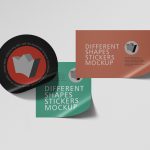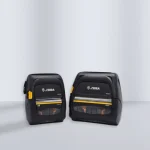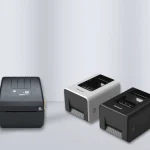A label is a small yet impactful design element that reflects a product’s identity, attracts attention, provides information, and adds value to the brand. However, beyond the design, the material quality of a label is also crucial. Selecting the right material for printed labels is critical to maintaining visibility and quality during display, transportation, and usage. So, how should you choose the appropriate label material?
1. Determine the Purpose of the Label
Where and for what purpose the label will be used is a key factor directly affecting the choice of material.
- For short-term use, economical and fast solutions are ideal (e.g., promotional items).
- For long-lasting and outdoor-resistant labels, more durable materials are needed (e.g., industrial machinery or external packaging).
The intended use of the label and the environmental conditions it will be exposed to should be your first criterion for evaluation.
2. Surface Structure and Adhesive Properties
The type of surface to which the label will be applied determines the type of adhesive needed. Surfaces can be flat, curved, rough, or moist. Consider the following when selecting materials:
- Glossy coated labels: Suitable for smooth surfaces.
- PP (polypropylene) labels: Resistant to water, moisture, and various chemicals.
- PE (polyethylene) labels: Ideal for flexible surfaces and packaging.
Additionally, special adhesives should be used for environments with low temperatures, high humidity, or UV exposure.
3. Material Compatibility with Printing Technique
The printing technique used on the label also influences material selection. The most common techniques include:
- Thermal printing: Typically used on heat-sensitive paper. Suitable for products with a short shelf life.
- Thermal transfer printing: Uses ribbons; more durable. Commonly used with coated paper, PP, or PE labels.
- Laser or inkjet printing: Requires specially coated label materials.
Using a material incompatible with the chosen printing technique may cause smudging or illegibility over time.
4. Determine Durability Requirements
The physical and chemical conditions the label will face are vital in determining the type of material. For example:
- If exposed to chemicals, laminated or synthetic labels should be used.
- For outdoor use, UV-protected and waterproof materials are essential.
- For cold chain products, materials and adhesives resistant to freezing should be selected.
5. Pay Attention to Aesthetics and Brand Alignment
A label is not just a tool for information, but also a face of the brand. The chosen material should align with your brand in the following ways:
- Should display color and print quality effectively.
- A matte or glossy finish should be chosen depending on the brand image.
- Transparent or metallic effect materials may be used when appropriate.
A high-quality label reflecting brand identity can enhance product appeal and boost consumer trust.
6. Balance Cost and Efficiency
Budgets vary by project. The most expensive label is not necessarily the best, but choosing the wrong material can lead to higher costs due to reprints and product returns. Therefore, factors such as:
- Application time
- Storage conditions
- Production volume
should be considered to strike the right balance between material and cost.
The Right Address for Label Materials: DGS Printing Technologies
Material selection in label design and production plays a vital role in product safety and brand perception. At this point, expert guidance and access to quality materials become essential. DGS Printing Technologies stands by businesses with a wide range of label materials, ribbons, thermal transfer solutions, and technical consultancy tailored to various sectors.
Serving industries such as food, cosmetics, logistics, automotive, and industrial labeling, DGS ensures your products are safely carried with durable and high-quality labels.
For more information and a quote on label materials, visit our website at https://dgs.com.tr/en/.






